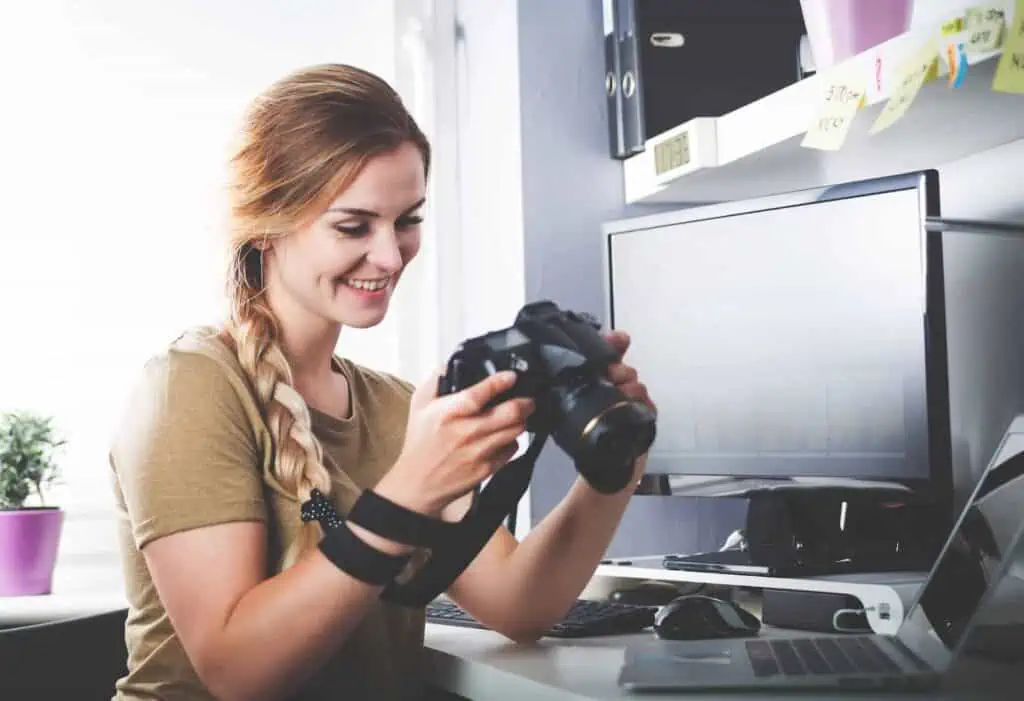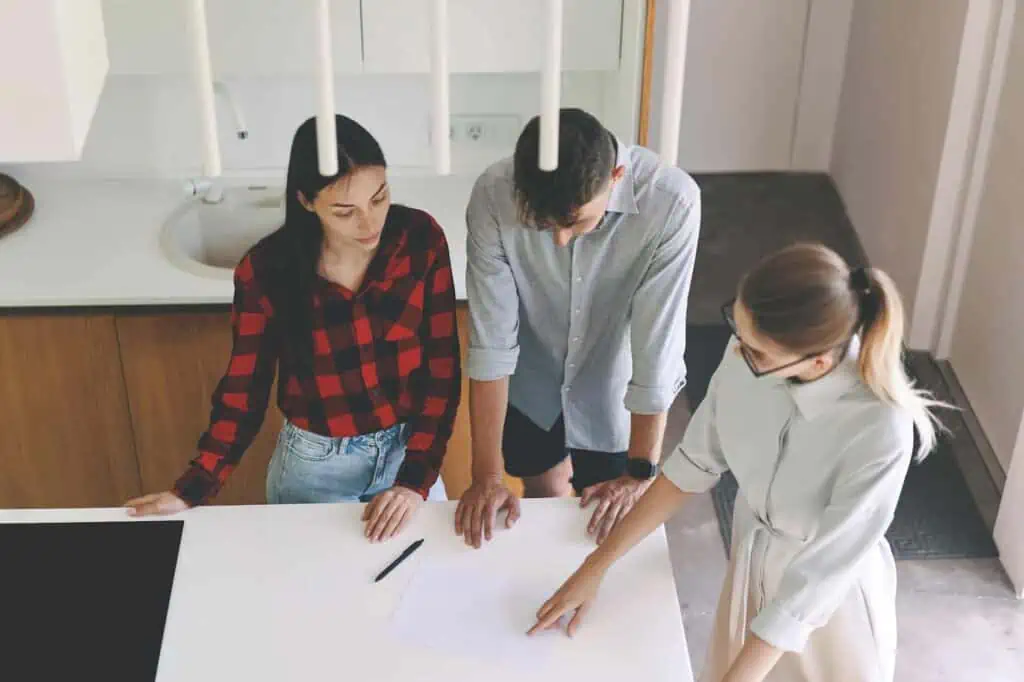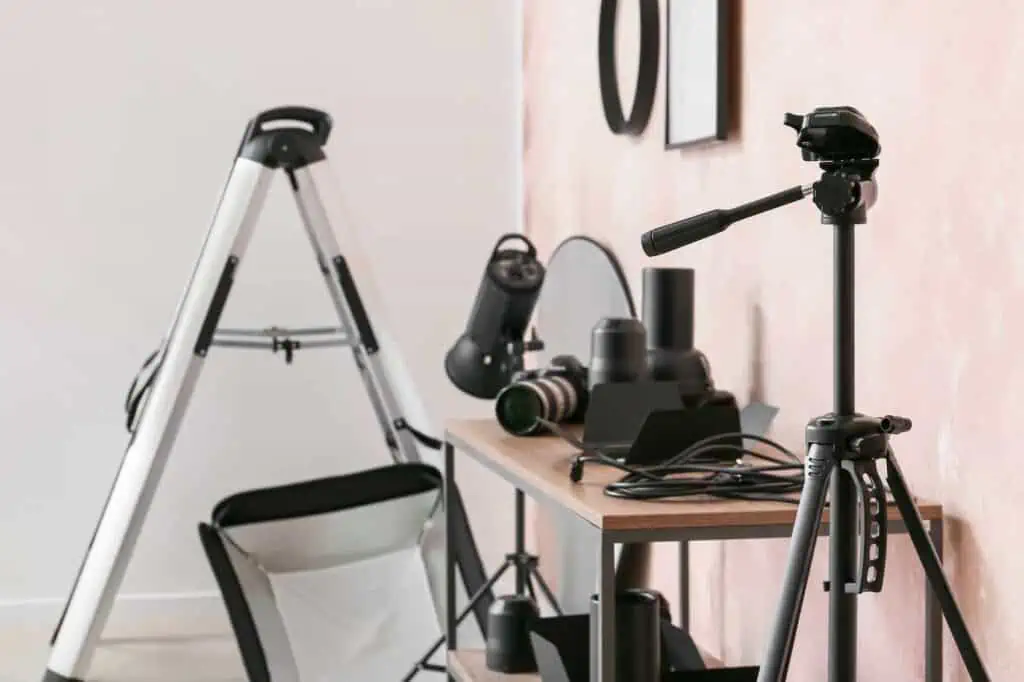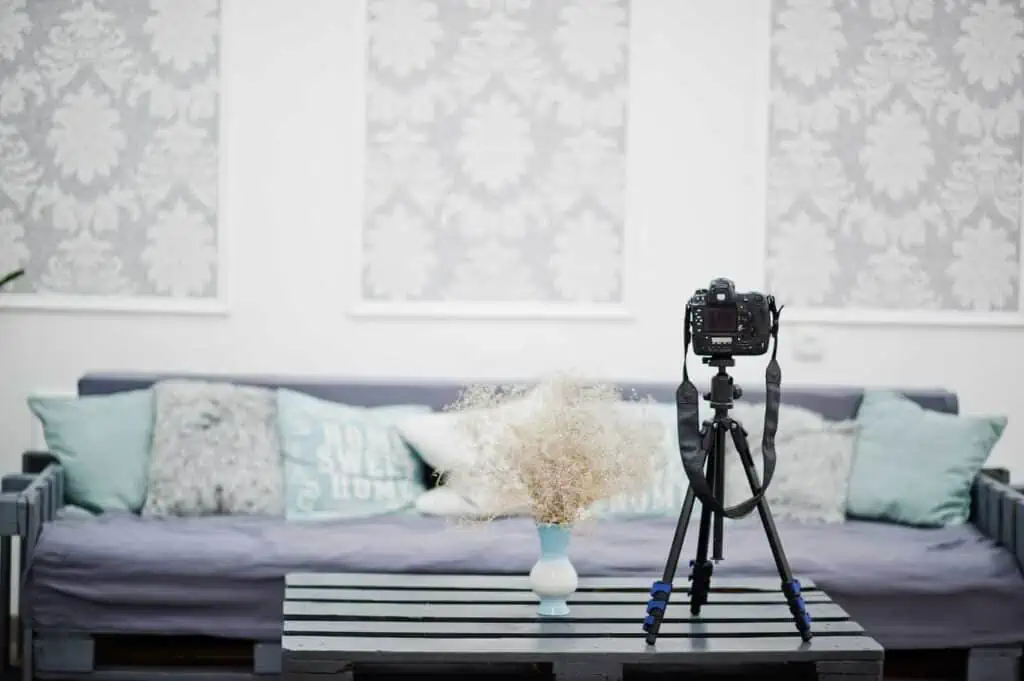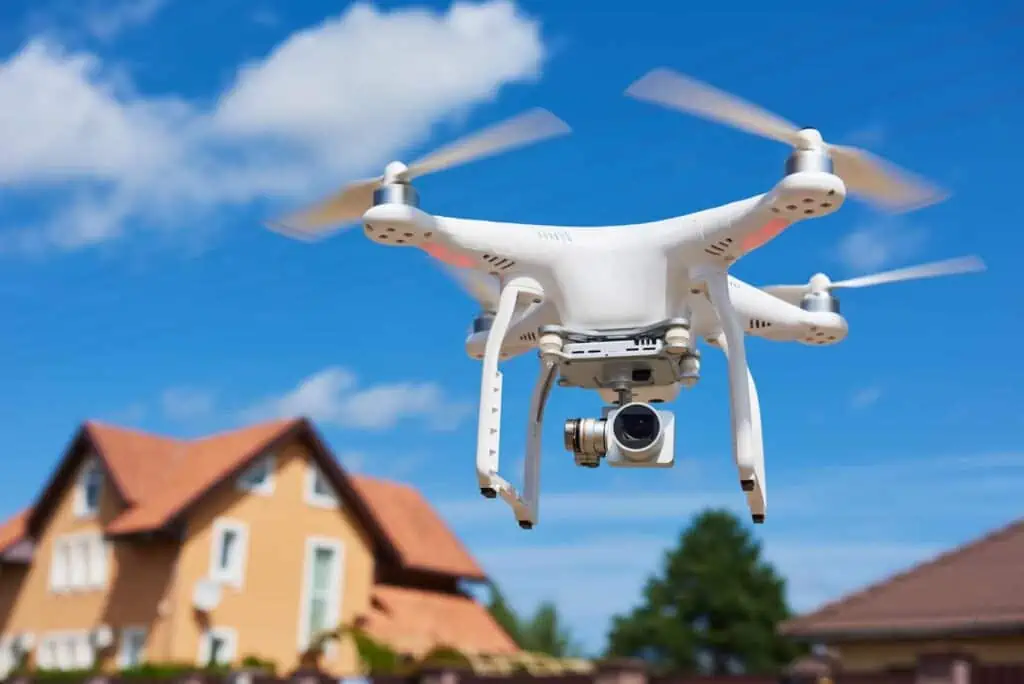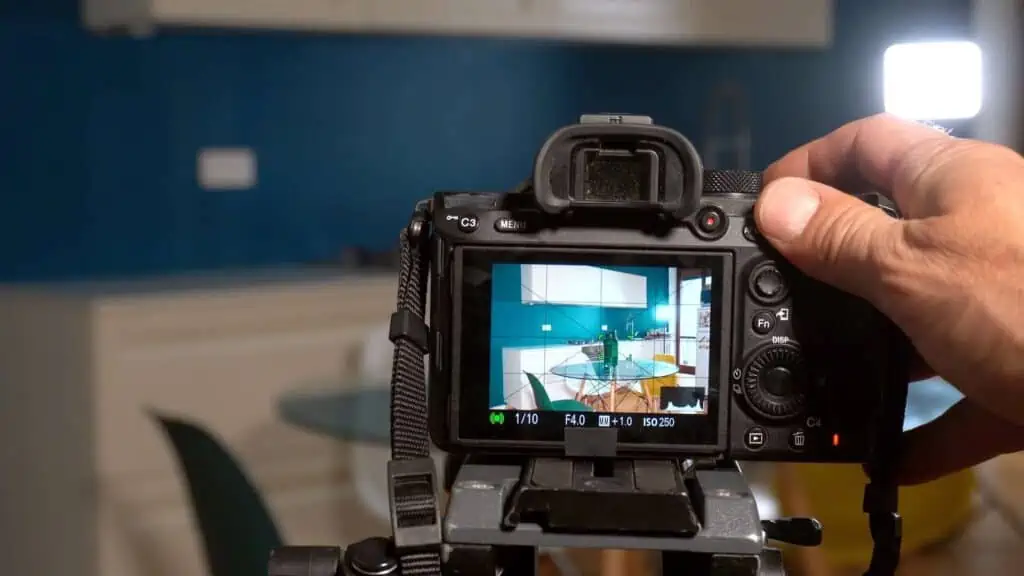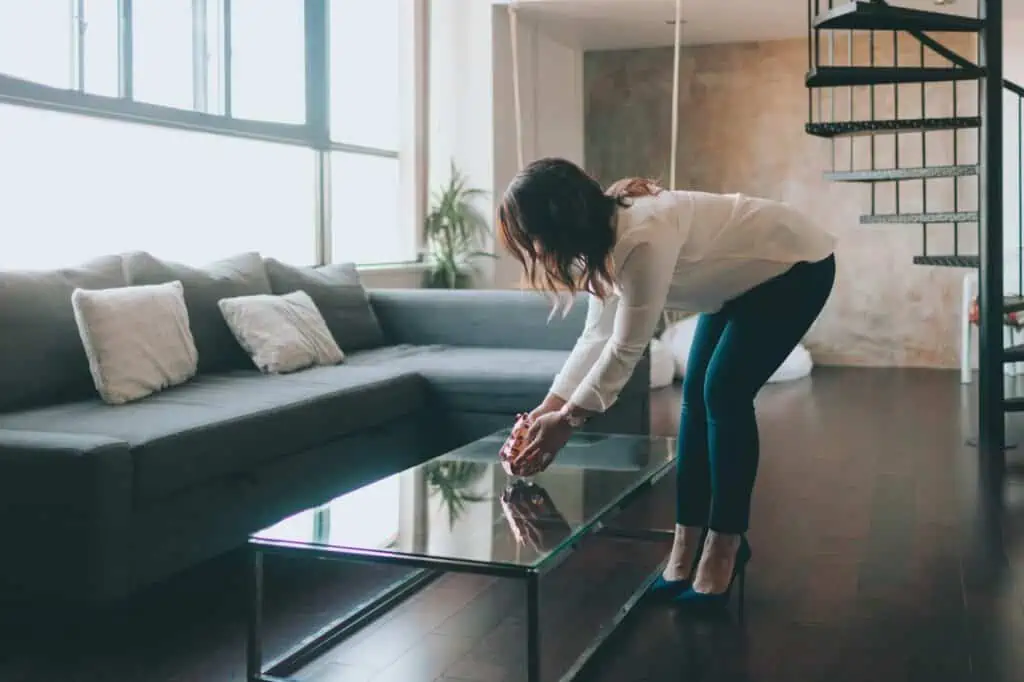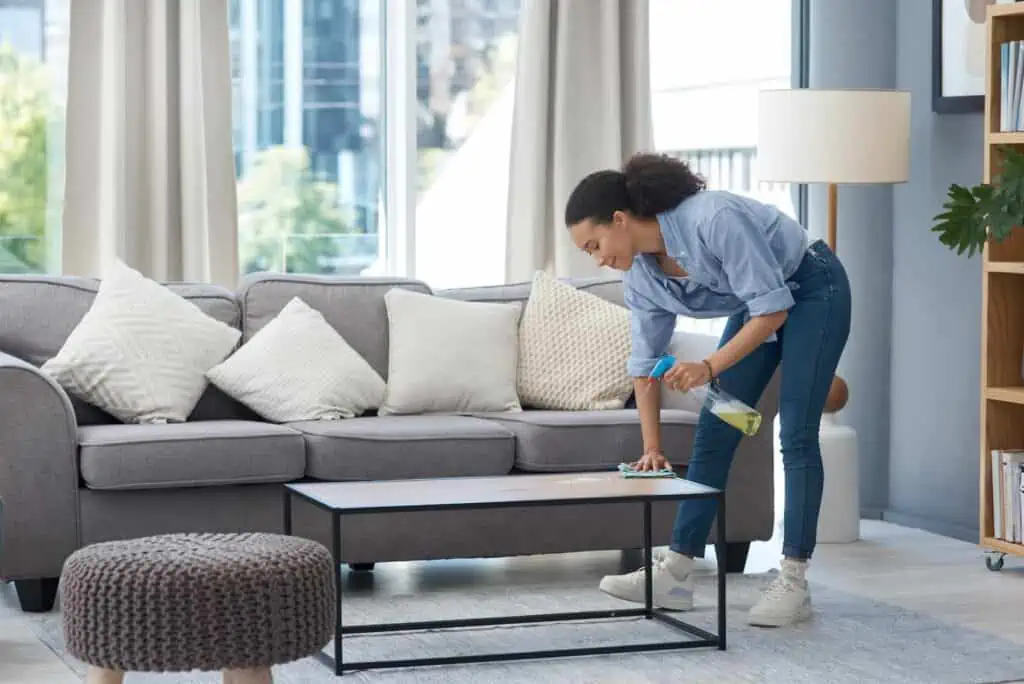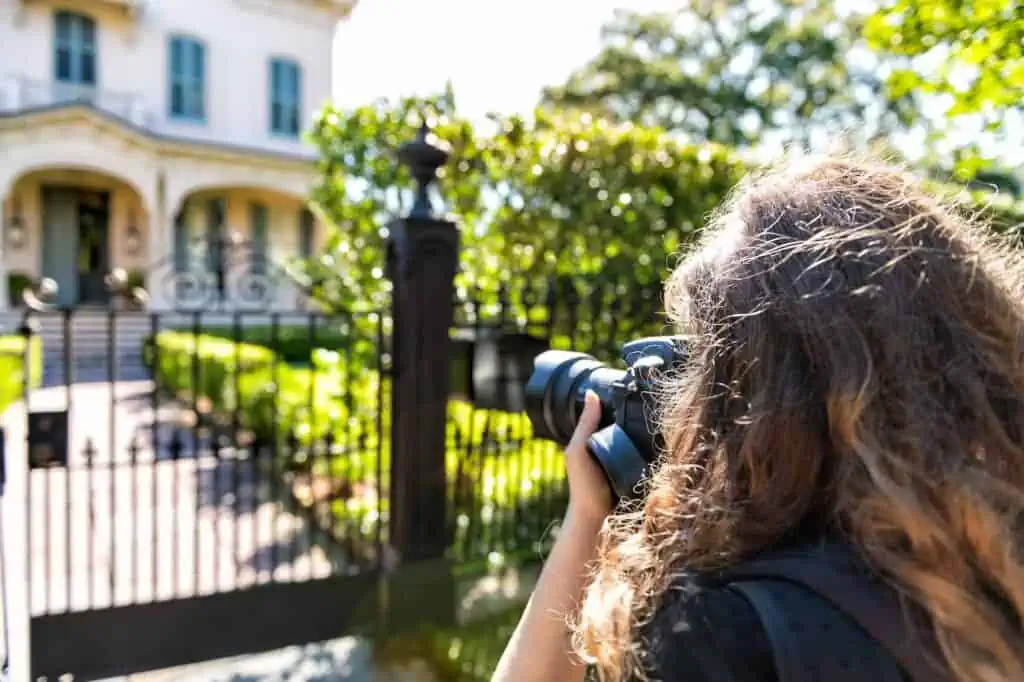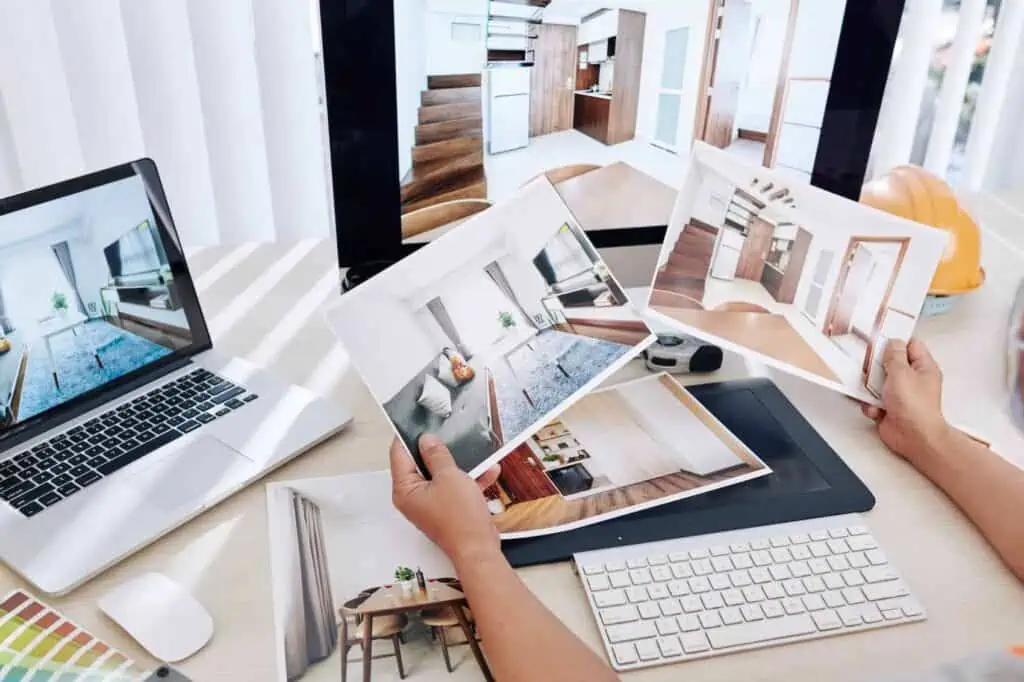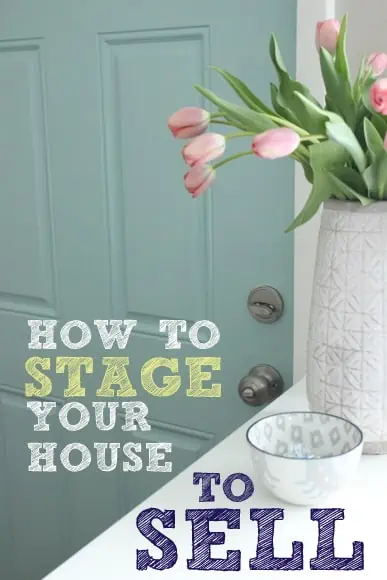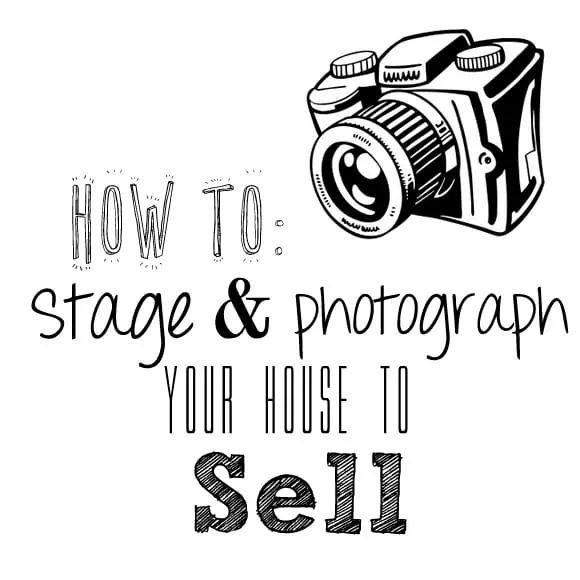What if I told you that posting photos of your home online might just be the key to catching its next owner’s eye?
According to the National Association of Realtors, 96% of all home buyers search for homes online. Nine out of ten buyers below the age of 57 said photographs were the most useful feature during their search for a new home.
These numbers are enough to make any homeowner sit up and take note. Home buyers want to walk through a home online before they take a tour in person, and high-quality photographs let them do exactly that.
Read on for a step-by-step guide on how to take real estate photos that’ll have your home off the market in no time.
What To Do Before You Start Taking Photos
Before you whip out your camera to start getting all the best shots of your property, there are a few things to consider and make decisions about.
DIY or Pro?
Let’s take a moment to consider whether you should hire a pro or go the DIY route for your property photos. There’s no right answer — whichever you choose will depend on what works for you!
Reasons to hire a professional photographer
- A real estate photographer has the skills, experience, and equipment needed to make your home appeal to potential buyers.
- Shooting your home yourself and getting publish-ready photos can take a fair bit of time, especially if you’re not comfortable behind the camera. Hiring a pro can be a much faster experience.
- You’re more likely to get high-resolution, perfectly lit photos that meet industry standards.
Reasons to DIY
- Hiring a real estate photographer can cost you several hundred dollars, depending on the size of your house and the number of photos you request. There’s a cost involved in taking your own too, but there’s no cap on how many photos you end up with.
- You have the flexibility to shoot (and reshoot) at your convenience without coordinating with someone else’s schedule.
- There’s less complexity in simply getting the equipment and doing it yourself. There’s no need for contracts, and you own all the photos you take.
Rules and Regulations
Depending on if you’re renting your home out, you have an HOA, or you want to use certain equipment for photos, there are some legal considerations you should be mindful of.
- Check with your tenants: You can sell a home you’re currently renting. Still, you should check your rental agreement — and tenants’ rights in your state — to create a reasonable timeline for the entire sale process that will eventually include viewings and asking the tenant to vacate. And always ask permission before you come into the home to make changes.
- Get permission from the HOA: If you live somewhere where there are amenities (like a gated community), there might be guidelines or restrictions about taking and using photographs of common areas or the exterior of the building. It’s best to check with the HOA, community guidelines, or other community oversight committees to make sure you’re in the clear.
- Register drones for aerial shots: Unfortunately, using drones to take photos to help sell a property doesn’t fall under recreational use according to FAA guidelines. You’ll need to register your drone and get a Remote Pilot Certificate before taking and using any photos for your home sale. The FAA website has all the steps and information you need to fly and photograph with your drone legally.
Invest in the Equipment You Need
There’s no doubt smartphone cameras can take some stunning photos today. But photographing a home for sale is more than just point and click. You’ll likely need to invest in good quality gear that will help you take the best photos possible.
Photography equipment can be expensive to buy, but the good news is that you can rent almost everything you need at a fraction of the price.
“Aim to get photographs you can work with straight out of the camera. Think of the editing stage as a way to boost good photos, not to salvage bad ones.”
If you prefer to get a feel for the equipment or hands-on advice before renting it, look for a local camera shop. The staff may also be willing to give you a quick tutorial on how to use the gear.
If you’re comfortable shopping online, Lensrentals and BorrowLenses have all the equipment you need from the best brands on the market.
Camera types
DSLR cameras are a good bet because they capture high-resolution photos and give you greater control over how the photos turn out. Full-frame cameras, on the other hand, perform better in low-light conditions and can capture more of a room in a single shot. Image stabilization is a must-have feature that helps reduce blur from minor hand movements like pressing down on the shutter.
Lenses
Wide-angle lenses in the range of 20mm to 24mm are often the go-to choices for interior photography. They’re wide enough to capture more of a room and make it appear large, but not so wide to make the room look distorted. Look for a lens that also has image stabilization.
Tripod
Shooting interiors often involves dealing with less-than-ideal light conditions. In low light, your camera’s shutter needs to stay open longer to let in enough light to properly expose the image. The longer the shutter is open, the more susceptible your photo is to camera shake — even with image stabilization in your camera and lens. A tripod helps you get around this by holding the camera steady throughout the exposure. It also helps with HDR and bracketing.
Lighting equipment
Even the best camera and lens in the world won’t save a photo in bad light. Lighting equipment can help you create the ideal light conditions to make your home look inviting. Some items to consider are an external or bounce flash to use on your camera, a softbox or umbrella for external lights, and reflectors or diffusers to bounce light into darker areas. Don’t use the flash that’s built into the camera as you can’t adjust its angle.
Drones
Aerial shots are optional but worth considering because they can give home buyers a comprehensive bird’s eye view of your property, including the land and any outbuildings. You’ll need to register your drone with the Federal Aviation Administration (FAA), so you might want to consider buying your own instead of renting.
Memory cards
Having multiple high-quality memory cards ensures you’re getting the best possible storage for your photos — “multiple” being the key word. It might seem convenient to grab one massive memory card and call it a day, but memory cards can get corrupted. If that happens, you could lose every photo you’ve taken. Spread your photos across multiple cards to minimize the risk. This is an item on the list you could consider buying instead of renting, because the cost difference between renting and buying isn’t significant.
Learn About Composition and Framing Basics for the Perfect Shot
Before you hit that shutter, you need to think about how the elements in your frame come together to tell a story. This is where composition and framing come into play, with the rule of thirds and leading lines.
Rules of thirds
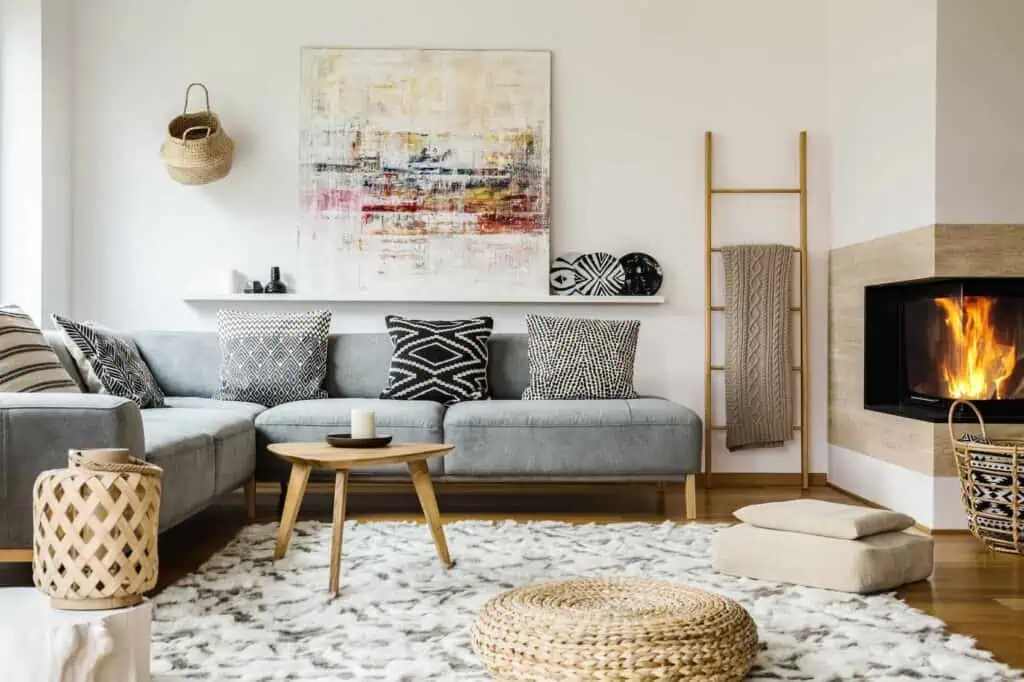
This is a classic photography principle that adds balance to your photos. To understand how it works in practice, pull up your phone camera and set the grid to show on the screen. You’ll see the frame divided into nine equal parts by two equally spaced vertical lines and two equally spaced horizontal lines.
The idea is to place the most important elements — like your fireplace or kitchen island — along these lines or where they intersect for a more appealing photo.
Leading lines

Leading lines are lines you can find within the frame that guide the viewer’s eyes toward the main subject. Look for architectural elements like doorways, edges of furniture, or the lines created by tile flooring.
These can naturally draw someone’s attention toward a focal point in your photo. For outdoor photos, fences or garden paths can be effective leading lines to guide a viewer’s eyes toward your home.
Get Familiar with Your Camera Settings
Take some time to get used to your camera and know what each button and dial does. You’ll see some letters and numbers on the screen that may not make much sense to you right now. Let’s take a look at what these mean.
Aperture, shutter speed, and ISO
These three settings determine what it takes to create a photo with the correct exposure and sharpness.
- Aperture: This is the opening in your lens that lets light in and is known by a number called ‘f-stop’. Here’s something you absolutely must know: a lower f-stop number means a wider opening, more light, and slightly softer photos; a higher f-stop number means a smaller opening, less light, and slightly sharper photos. For real estate photos, aim for an aperture between f8 and f11. This range usually results in sharper images by getting more of the scene in focus.
- Shutter speed: This is how long your camera’s sensor is exposed to light. A fast shutter speed (like 1/2000 of a second) freezes action, while a slow one (like 1/30 of a second) can introduce blur. Adobe suggests that for real estate photography, your shutter speed is somewhere between 1/60 and 1/2.
- ISO: This controls your camera’s sensitivity to light. Lower numbers (e.g., 100 or 200) are less sensitive and produce cleaner shots. Higher numbers (e.g., 800 or 1600) are more sensitive but can produce grainy photos. Keep it below 400, especially indoors, to minimize noise.
You can shoot in fully manual or semi-automatic modes. Fully manual means you manually set all three values. It gives you complete control, but does require a good understanding of how aperture, shutter speed, and ISO interact.
In semi-automatic modes, you can adjust either the aperture or the shutter speed, and the camera will automatically adjust the rest. This is a good middle ground if you’re not comfortable going fully manual.
See prices for local moving labor. Read real customer reviews. Easily book your help online.
RAW vs. JPEG
RAW and JPEG are the file types your photos will save in. While JPEG might seem like the easy choice because it’s more commonly used and instantly shareable, RAW ultimately wins because of the control it gives you over the final photo.
- More editing flexibility: A RAW file retains much more data than a JPEG. This means that when you’re editing the photos, you have more room to adjust things like exposure, colors, and sharpness without sacrificing image quality.
- Better dynamic range: RAW files capture a broader range of lights and darks, which comes in handy when you’re dealing with varying lighting conditions like a bright window in a relatively dark room.
The main downside to RAW files is that they’re larger and require specialized software for editing. But, given that you want to show off your home in the best possible light, it’s 100% worth the extra memory cards and effort.
Prepare Your Property for the Best Shots
First things first: make a list of the shots you absolutely must take. You don’t want to finish your shoot and then realize you forgot to capture something crucial.
Your list should focus not only on your favorite rooms, but also on what rooms will attract buyers. “Potential buyers focus on the kitchen, bathrooms, and living room space in that order because they imagine themselves using those spaces often,” says Peter Kim, CEO of Odigo Real Estate Club.
Here’s a quick list to get you started:
- Kitchen and living room: At least one shot each, but preferably more. If possible, show how they connect to other parts of the house.
- Bathrooms: One general shot should do, but if it’s a larger or uniquely designed bathroom, consider additional angles. Highlight features like double sinks, if the bathroom has them.
- Master bedroom: Focus on the room’s size and any special features, like a walk-in closet.
- Front exterior: Make a great first impression and highlight the house’s curb appeal.
- Backyard: If you have one, capture it from an angle that shows how big it is. Show any outbuildings it may have, like a shed or a greenhouse.
- Other rooms: One shot of any other appealing rooms/areas like a home office or studio, pantry, laundry room, basement, and garage.
Having a list gives you a game plan to follow so you’re not just snapping pictures aimlessly — or forgetting an important room in the process.
Decluttering and staging
A cluttered room is a photographer’s — and home buyer’s — nightmare. When potential buyers look at your listing, you want them to focus on the spacious rooms, natural light, and other selling points, not the knick-knacks you’ve collected over the years.
Photographer and videographer James Costa suggests doing a thorough clean of the house before you begin — including vacuuming, mopping, and cleaning all counters and windows. Then, he says, remove all the clutter.
“Don’t go wider than 24mm [lenses]! Extreme wide-angle lenses cause distortion and make the room look unnatural.”
“People need to picture themselves in the home, not the current owners,” says Costa. “You want to make certain you remove personal items such as photos. Put all clothing and shoes away, and other clutter such as keys and mail.”
And once everything’s decluttered, it’s time for staging. Costa shares some of his recommendations:
- Kitchen: Counter space is king. Remove as much as you can but remember to make it seem livable. Keep a few small appliances such as a coffee maker out and place something colorful like a bowl of fruit.
- Living room: Arrange books on shelves, and clean the fireplace if the room has one. Fluff all pillows to make them seem more inviting, and hide cables for the TV and other electronics.
- Bathrooms: Put out fresh, matching towels, lower toilet stands, and consider putting out decorative soap. Remove personal items such as shampoo, and remove floor mats to show off the floors.
Enhancing curb appeal
Curb appeal is essentially how your home looks from the street. And since it’s the first thing buyers see when they pull up for a visit, it sets the tone for the entire viewing.
If potential buyers are turned off before they step inside, you’re already facing an uphill battle, so it’s important to take steps to make a great first impression.
- Freshen up the paint: If your front door or shutters have seen better days, add a fresh coat of paint to liven them up. You don’t have to go for a dramatic color change. A simple fresh coat of the existing color can make them look more appealing.
- Pay attention to landscaping: Trim overgrown bushes, remove dead plants, rake the yard, mow the lawn, and consider adding a few flower pots near the entrance.
- Put away outdoor tools and toys: Garden tools, lawnmowers, or kids’ toys scattered around can be distracting in photos. Stash them in the garage or a shed to keep the focus on your home.
- Sweep and power wash: Dirt and grime build up over the years. A quick power wash of your walkway, driveway, and facade can make your home look well-maintained. At the very least, it can remove debris and freshen up the space.
Photograph the Interiors
The beauty of digital photography is that you can review your photos as you take them. If you’re unhappy with the exposure, or you want to swap out a vase for a coffee table book, you can do this as you’re shooting.
Aim to get photographs you can work with straight out of the camera. Think of the editing stage as a way to boost good photos, not to salvage bad ones. Sure, it might take a bit more time during the shoot, but this step can save you heaps of editing time later.
Lighting the room
Here’s a photography tip for you: lighting is possibly the most important aspect of what makes a good photo. Shooting in natural light sounds hassle-free, but relying solely on the sun can be tricky. The angle of sunlight changes throughout the day, affecting color temperature and shadows in each room. You can use different techniques for more control over how the room looks.
- Interior lighting: Turning on interior lights can make the space look warm, but they often vary in color and temperature. You’ll need to adjust the white balance during post-processing to get consistent results.
- Exterior lighting: Use added exterior lights mounted on a softbox or umbrella to light specific areas of the room. This also allows for more control over the temperature and color of the light. If your budget doesn’t stretch to include too much lighting equipment, you can use reflectors to bounce natural light into shadowed areas.
- Dos and donts of camera flash: You can also use a bounce flash that’s mounted on your camera, but do not point the flash directly at what you’re shooting. Direct flash can create harsh, unflattering shadows and highlights. Instead, bounce the flash off ceilings or walls to create a softer look and reduce glare on shiny surfaces.
- Bracketing: This is a process where you’ll take multiple photos at different exposures, which you’ll then combine into one while post-processing to create a more balanced scene. It’s to make light distribution appear more even in rooms where there’s a very bright side (like from windows) contrasted against a very dark one. The frames must be identical for this to work properly, which is where using a tripod becomes essential.
- Make use of overcast days: Brighter sunlight is better, right? Not necessarily! Cloudy weather acts as a natural light diffuser, reducing harsh shadows.
Picking the right light is not a ‘one and done’ situation. Each room may need different lighting depending on how big it is, which direction it faces, and how much natural light it gets.
Convey the depth of the space
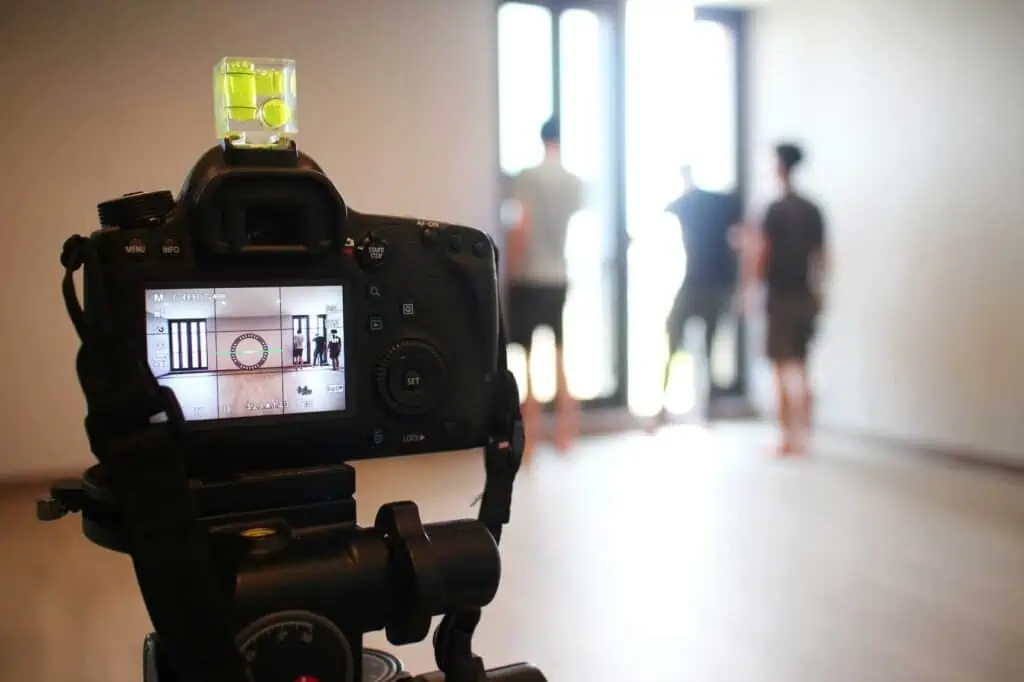
When photographing a room, you want the viewer to get a sense of its layout and size. A poorly executed shot can make a large room look cramped or a cozy room look uninviting. So how do you get it right?
- Use a wide-angle lens: Lenses in the range of 20mm to 24mm help you capture more of the room in a single frame and make spaces appear larger. Don’t go wider than 24mm! Extreme wide-angle lenses cause distortion and make the room look unnatural.
- Avoid tilting the camera: “Try to be on level with your main subject and tilt the camera as little as possible,” says photographer Matthias Haltenhof. “In an ideal situation, all images can be photographed at a nearly horizontal level, so you don’t need to correct a lot in post-processing.” Check if your camera has an electronic level setting or buy a hot shoe level. Both methods will show you if your camera is pointing straight into the room or tilting up or down. If you need to shoot something below or above eye level, adjust the height on the tripod instead of tilting the camera.
- Balance the elements in the frame: Use the rule of thirds and leading lines you learned about to make the photograph look appealing. For each setup, decide what you want to catch the viewer’s eye — is it the reading nook, dinner table, or cohesiveness of the layout — and frame your shot with the composition basics in mind.
Photograph the Exteriors
Getting the right shots of your home from the outside matters just as much as the living spaces inside. Whether it’s the backyard with the swing or a well-lit driveway, the spaces outside your walls should shine in these photos.
Make a great first impression
A house that looks welcoming right off the bat can make home buyers stop scrolling and pay attention. Capture your home’s curb appeal so viewers can see what it looks like from the outside.
- Showcase landscaping: If you have colorful flower beds, a well-manicured lawn, or a unique tree, include these in your shots to add character. If your front or back yard space is small, use angles that make the most of the space, such as photographing from a corner to give a sense of expansiveness.
- Highlight outdoor elements: Got a pretty mailbox, charming front door, or stylish windows? These are elements that make your home stand out, so get these in the frame.
- Shoot at the right time: The time of day can dramatically affect the mood of your exterior shots. During golden hour (the first hour after sunrise and the last hour before sunset), the angle of the sun creates a soft, warm, flattering light and is best for general photos. You can use an app to know when golden hour is at your location. Shooting at twilight lets you showcase outdoor lighting and offers a glimpse of what the house will look like in the evenings.
See prices for local moving labor. Read real customer reviews. Easily book your help online.
Show an aerial perspective
Drone photography lets you offer a new viewpoint to your property that displays its size, layout, and the surrounding area.
Before you take to the skies, check if there are any airspace restrictions in your area. You can verify this by directly contacting local authorities or using apps and websites that show no-fly zones specific to drones. The FAA website is a good place to begin to learn more about airspace restrictions.
If you’re all set to go, remember that the basic rules of photography — good light and good composition — apply to aerial shots as well. In addition, you need to be mindful of your drone’s surroundings to avoid it getting stuck in a tree or blown off by the wind.
Edit Your Photos
After you’ve taken the photos, it’s time to move them off the memory card and onto your computer to edit them. The goal isn’t to make your house look unrecognizable or deceive potential buyers. You want to lightly enhance your photos and turn good photos into great ones.
Keep in mind, you can outsource this stage of the photography process if you like. There are professional photo editors who offer their services on websites like Fiverr. Check different profiles and reviews before deciding if you’d like to hire someone or edit the photos yourself.
Selecting the right editing software
There are multiple photo editing software options for you to choose from. Adobe Lightroom and Photoshop are industry standards and offer a range of features from basic adjustments like exposure and contrast, to advanced capabilities such as layering and retouching.
You can also use these programs to post-process bracketed images. They’re subscription-based and start at $9.99 per month with a free 7-day trial. Adobe’s tools are powerful options, but there is a small learning curve if you’re not familiar with the interface of Adobe products.
“It might seem convenient to grab one massive memory card and call it a day, but memory cards can get corrupted… [and] you could lose every photo you’ve taken. Spread your photos across multiple cards to minimize the risk.”
Capture One is a good alternative with similar features as the Adobe photography suite. Its plans start at $24 per month with a free 30-day trial.
GIMP (GNU Image Manipulation Program) is a free alternative if you’re looking for a free option. While it may lack some of the polished features of the paid software options, GIMP offers the tools you need for photo editing and is open-source.
Color correction and enhancement

There are a few basic photo editing steps you should run your photos through. For all the adjustments, use a light hand to keep your photos looking as natural as possible.
- Adjust the white balance to balance out any varying color temperatures in your photo and to make your house look natural yet warm.
- Enhance colors and vibrancy to make greens greener and blues bluer in your outdoor photos. Don’t overdo it — oversaturated photos will have the opposite effect and turn buyers off.
- Retouch images to remove minor imperfections like wall stains.
- Sharpen your photos and reduce noise to make your photos crisp and reduce graininess that may occur at higher ISO settings or in lower light conditions.
- Lens corrections automatically adjust any lens distortion and chromatic aberration or color distortion (if the software you use has the option).
The key takeaway here is moderation. Overediting can make your photos look artificial, and it may also misrepresent the property, which will turn potential buyers off when they come to see the home in person.
Upload Your Photos to Your Home Listing
Your photos are taken and edited, and it’s time to upload them to the listing. But don’t just choose files in a random order! “A common mistake in listing photos is not placing the photos in an order which takes the buyer throughout the home in a continuous way,” says real estate broker Chuck Vander Stelt.
Jumping around from room to room can be disorienting. Instead, think about the route you want potential buyers to take through your home. By following a sensible sequence, the listing can tell a coherent story of what it’s like to move through your home.
Save your photos in JPEG format to upload (not RAW that you shot in), and check the property listing site’s requirements or file size restrictions.
With the photos doing the heavy lifting and showing off your home, you’re all set to get ready for viewings. Next step: changing that ‘For Sale’ sign to ‘Sold’. Good luck!

